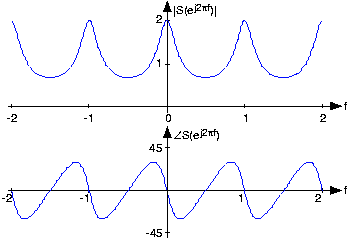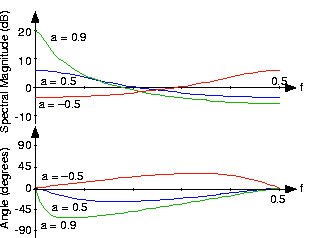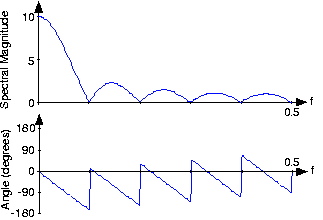| << Chapter < Page | Chapter >> Page > |
Let's compute the discrete-time Fourier transform of the exponentially decaying sequence , where is the unit-step sequence. Simply plugging the signal's expression into the Fourier transform formula,
This sum is a special case of the geometric series .
Using Euler's relation, we can express the magnitude and phase of this spectrum.
No matter what value of we choose, the above formulae clearly demonstrate the periodicnature of the spectra of discrete-time signals. [link] shows indeed that the spectrum is a periodic function. We need only consider the spectrumbetween and to unambiguously define it. When , we have a lowpass spectrum — the spectrum diminishes as frequency increases from to — with increasing leading to a greater low frequency content; for , we have a highpass spectrum ( [link] ).


Analogous to the analog pulse signal, let's find the spectrum of the length- pulse sequence.
The Fourier transform of this sequence has the form of a truncated geometric series.
For the so-called finite geometric series, we know that
Derive this formula for the finite geometric series sum. The "trick" is to consider the difference between theseries'; sum and the sum of the series multiplied by .
Applying this result yields ( [link] .)
The ratio of sine functions has the generic form of , which is known as the discrete-time sinc function , . Thus, our transform can be concisely expressed as . The discrete-time pulse's spectrum contains many ripples, the number of which increase with , the pulse's duration.


Notification Switch
Would you like to follow the 'Ece 454 and ece 554 supplemental reading' conversation and receive update notifications?